For over a decade, Guangzhou Design Week has never ceased its dialogue and exchange between Chinese design and world-leading design philosophies. The International Design Dialogue (IDD) has established an annual operational framework centered around four core content pillars—Dialoguing with Masters, Discovering New Voices, Selecting Masterpieces, and Leading Strategy/Origin—supported by four major activity systems: Leading Release, Leading Think Feast, Leading Ceremony, and Leading Magic Camp, alongside a annual Host City program. This comprehensive system is dedicated to fostering dialogue, exchange, and development between world-leading design and Chinese design.
Dialoguing With Masters To Follow The Leading
IDD will identify and honor "IDD Design Masters of the Year" by nominating leading figures or institutions from around the world who have made significant achievements, practices, and contemplations in the field of design. This process involves collaboration with leading Chinese and international design institutions, organizations, and media. Throughout the year, IDD engages these Masters through interviews, speech forums, and other formats to delve into their thoughts. These interactions are curated into specialized interview features and other content, which are subsequently disseminated and showcased through leading communication platforms and channels both in China and abroad. The ultimate goal is to gather and share leading global design philosophies, hoping to inspire the renewal and development of the design industry in China and beyond.
In this issue, we step into Steve Leung Design Group (SLD) for a dialogue with Mr. Steve Leung, the internationally renowned architect, interior and product designer, and founder of SLD. Together, we explore the pioneering mindset behind a leading interior design company.
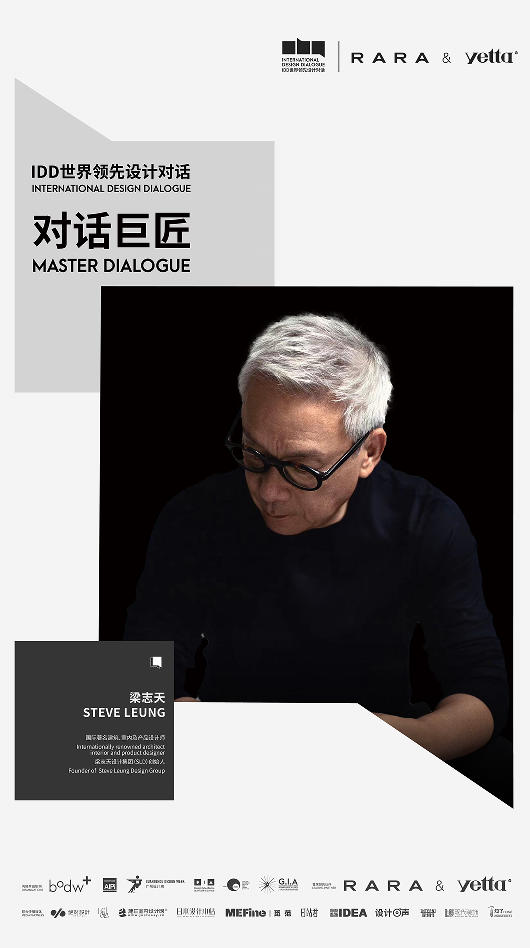
STEVE LEUNG
Internationally renowned architect, interior and product designer
Founder of Steve Leung Design Group
01
Q&A STEVE LEUNG
Q1:Mr. Leung, as a global design leader, you have not only set benchmarks in the design field but also continuously expanded your influence through roles in international organizations and the establishment of a European joint venture. In your view, what is the core strategic vision behind these 'leading' initiatives that go beyond single design projects to build a global platform and position yourself at key nodes of the design ecosystem? How does this deepen your leading role in the East-West design dialogue?
A1:Steve Leung: For me, "leading" has never been about the success of a single design project or a label of industry status; it's about how design can transcend geographical boundaries to become a "universal language" for cross-cultural dialogue, as I often say, "Design knows no boundaries". From my years of collaboration with international furniture brands, to serving as the first Chinese Chairman (2017-2020) of the International Federation of Interior Architects/Designers (IFI), and to establishing the first European joint venture in Milan, SLD · Andrea Bonini, I have always believed in "two-way empowerment" – bringing traditional Eastern culture and philosophical concepts to the global stage, while also allowing Western cultures and global perspectives to interact with us, fostering diverse ideological exchanges, mutual learning, cooperation, and building an industry environment for mutual growth.
In the contemporary East-West dialogue, rather than a one-way output, I prefer to play the role of a "symbiosis enabler". Eastern wisdom, such as the philosophical concept of 'Yin and Yang', needs to be integrated into the global design context through concrete projects. Simultaneously, we are absorbing the mature experience of the Western design field in technological application. This kind of "two-way empowerment" allows the philosophical conception of the East to find precise expression empowered by technology, and also allows the technical logic of the West to incorporate narratives of humanistic warmth – ultimately achieving integration in design, allowing the wisdom of different cultures to coexist and co-grow symbiotically within space, becoming a resonance of life that transcends locality.
Q2:Mr. Leung, your design philosophy of 'Eastern Soul, International Vision' has long transcended mere aesthetic expression, becoming an important component of global high-end real estate value. As an industry benchmark, when balancing the depth of local culture inherent in the 'Eastern Soul' and the universal tension of the 'International Vision', your choices often Predict the industry's next direction. What is the core logic behind this leadership process?
A2:Steve Leung: Regardless of the time, my core aim is to find the most appropriate "balance" between cultural essence and human needs – allowing local culture to become a "concrete carrier" of emotion, and letting the international vision serve as a "transparent context" for the localization of culture. I hope design can fulfill the essential needs people have for living spaces: the need for a sense of belonging, and the pursuit of commonality. Indeed, our Eastern Cultural Heritage is profound, and the "Eastern Soul" does not simply involve placing Eastern elements literally into a space. Rather, it's about discovering the connotation of Eastern culture and expressing it through modern techniques to fit our lifestyle. The "International Vision", meanwhile, emphasizes diversity more. It's about understanding the different expectations people from different cultures have for space. The wisdom extracted from these different cultures can make design more flexible.
Just like in my collaboration with the French brand Baccarat on the Printemps Bleu ceiling chandelier, Chinese blue-and-white porcelain and French crystal craftsmanship achieved mutual success under the theme of "contemporary interpretation of tradition" – Eastern "traditional cultural elements"entrust Western craftsmanship with narrative quality, while Western "technical precision" gave Eastern aesthetics a more universal medium of expression. The value of design lies not in being Eastern or Western, but in whether it can allow everyone within the space to find a sense of belonging. This, perhaps, is the essence of "leadership": first understanding people's needs, then letting design serve people.
Q3:Your works are always admirable. We are particularly curious: when you observe the Chinese design market, what characteristics attract you the most? And when facing numerous design project invitations from China, what kind of project instantly ignites your creative passion? If convenient to share, how do you consider your fee standards for projects in China? We would be happy to connect you with partners that align with this vision.
A3:Steve Leung: What most attracts me about the Chinese design market is its unique substance, deeply rooted in rich cultural soil yet always maintaining a sharp responsiveness to new trends. In recent years, the collision between tradition and modernity in the Chinese market has constantly Spur new possibilities: for instance, people are beginning to contemplate how traditional Eastern culture can adapt to contemporary life, seeking ways for it to coexist with modern functions within the vibrant atmosphere of old urban districts. This vitality of "innovation within inheritance" keeps design constantly supplied with fresh propositions, allowing these projects to become bridges connecting the past, present, and future. Furthermore, the market's understanding of the "value of design" is deepening. People no longer see "design" merely as a beautifying function, but recognize its ability to reshape the spiritual core of space and enhance the quality of life. This consensus itself Nurture enormous creative space.
Usually, projects that can deeply explore cultural connotations and have the potential for cultural output catch my eye. This is because I greatly hope to use design to allow the touching wisdom within traditional Chinese culture to break through geographical boundaries and become a language perceived and resonated with by the international community. This type of project is not just about creating a design work; it's more like building a cultural bridge, allowing the world to see the contemporary vitality of Eastern culture through design. This possibility of "allowing tradition to live in the present and reach further" always fills me with creative impulse. Examples include my previously mentioned collaboration with the French brand Baccarat on the Printemps Bleu chandelier, and years ago, my collaboration with the Italian top hardware brand Fusital on the H377 series of door handles, inspired by ancient Chinese brass locks.
Regarding fee standards, I believe good design requires the team to devote sufficient creativity, time, and professional accumulation, coupled with the pursuit of detail. The unique value this brings to a project itself deserves reasonable recognition. I always believe that the charm of Chinese design lies in its depth and inclusiveness. Truly valuable design must be based on a consensus of the "people-oriented" philosophy. I hope we Chinese designers can together explore more possibilities of Eastern design within the context of our era. This is the most precious thing.
About STEVE LEUNG
When Eastern and Western aesthetics intersect, design and real estate deeply integrate, and commercial value collides with cultural mission – at such multidimensional junctures, the name Steve Leung has long transcended the category of an individual designer, condensing into a highly recognizable banner in the field of Chinese design.
Using space as his canvas and design as his scalpel, he has engraved profound marks combining an Eastern soul with an international vision onto the grand epic of real estate evolution. Not confined to the crafting of individual rooms or scenes, he elevates design into a profound force that penetrates the shell of buildings, reaches the core of value, and thereby establishes an unshakable leadership position for Chinese designers on the global stage of high-end real estate design.
Under his pen, the essence of Eastern philosophy and the rhythm of modern international style resonate interwoven, transforming into the breath of top-tier luxury homes, the ambience of luxurious hotels, and the pulse of commercial projects. From the London Shangri-La Hotel, Tokyo's Park Mansion, Singapore's The Capitol, to Shanghai's Gubei No.1, Shenzhen's Shenzhen Bay No.1, and Xiamen's Henghe Qishang, it is under his pen that these works shine, achieving a fusion of the profound artistic conception of Eastern aesthetics and the pure vocabulary of modern design.
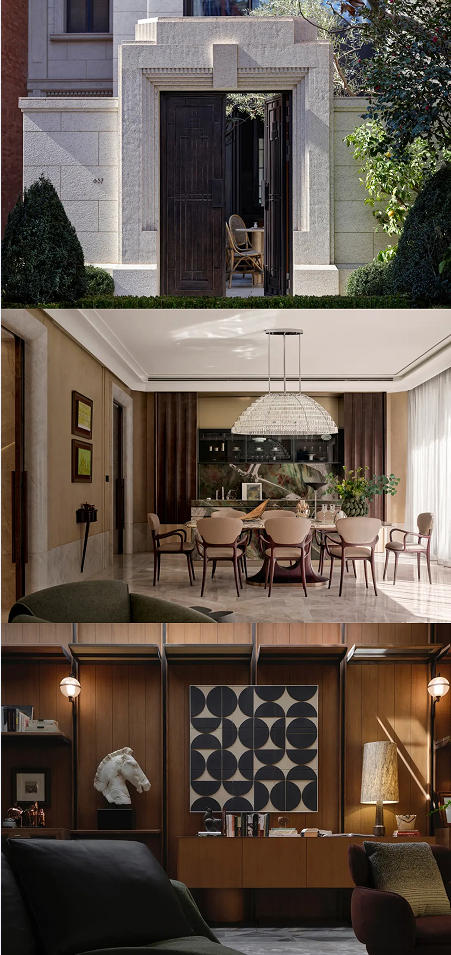
Reshaping the Discourse Power in Real Estate Aesthetics, Engaging the Globe with Eastern Philosophy
While many international design teams were still covering global high-end real estate with a dominant Western aesthetic, Steve Leung had already made his mark in the global market with his unique design language. Through decades of deep deconstruction of urban fabric and living philosophy, he has even altered the market rules and gold standards of commercial real estate. His design journey is filled with memorable milestones. Leading domestic real estate developers like the Henry Fok Group, Vanke, and Hongkong Land have also come to regard "Leung's design" as a "golden Reputation" for the aesthetics and quality of their flagship projects. International landmark projects in London, Tokyo, Singapore, and others also rely on his ability to reshape local characteristics with an Eastern spirit.
The most profound imprint on Steve Leung's design path is the ultimate pursuit of an "Eastern Soul, International Vision". The soul of his design is deeply rooted in the fertile soil of Eastern culture, yet it can display its essence from a world perspective. Growing up and being immersed in Hong Kong, a city where Eastern and Western civilizations blend, naturally endowed him with a mindset that crosses cultural barriers. He keenly captures the core of Eastern aesthetics – a spatial view that emphasizes the creation of artistic conception, advocates simplicity, and pursues inner harmony. However, his "simplicity" is by no means an empty minimalism; it is a spiritual expression after refinement and distillation. His "natural" is not only a preference for raw ecological materials but also a profound respect for the nature of space, the flow of light, and the emotional needs of the occupants.
As he himself stated, "Design needs to be rooted in contemporary life and should not be constrained by symbolic labels of 'East' or 'West.' What we need to excavate is the spiritual core belonging to contemporary China and facing the world." This forward-looking design proposition not only provides creative ideas for countless designers but has also become an important standard for measuring high-quality design within the real estate industry, establishing his leadership in the innovation of design concepts.
His influence is reflected not only in individual works regarded as benchmarks but also in his foresight regarding the industry landscape and his practice of reshaping it. As the founder of Steve Leung Design Group (SLD), Steve Leung, with his multi-dimensional "leading" posture, continuously promotes the movement of Chinese design strength to the global forefront. In practice,Rely on his keen control over spatial utilization and light coordination, he consistently runs through the philosophy that "design serves human emotion and experience," fully considering the user's style, personality, and cultural background to create comfortable, harmonious spaces with unique aesthetic value, achieving good commercial returns.
He has led SLD in completing over 4000 projects worldwide, covering more than 130 major cities globally. From the exquisite luxury of The Cullinan at Hong Kong's Kowloon Station, to the contemporary reinterpretation of traditional Chinese cultural spirit in Beijing's Chang'an Taihe and Tiantan Fu, Steve Leung's works reveal a clear Eastern narrative path – rejecting the heap of rigid symbols, using refined linear order, exquisite material control, and restrained spatial blankness to create an aesthetic realm of deep, quiet flow. Thus, Chinese designers are no longer rule followers but have become redefiners of the global real estate aesthetic value standards – what he broke through is not only the design paradigm itself but also the original power structure of the real estate value chain.
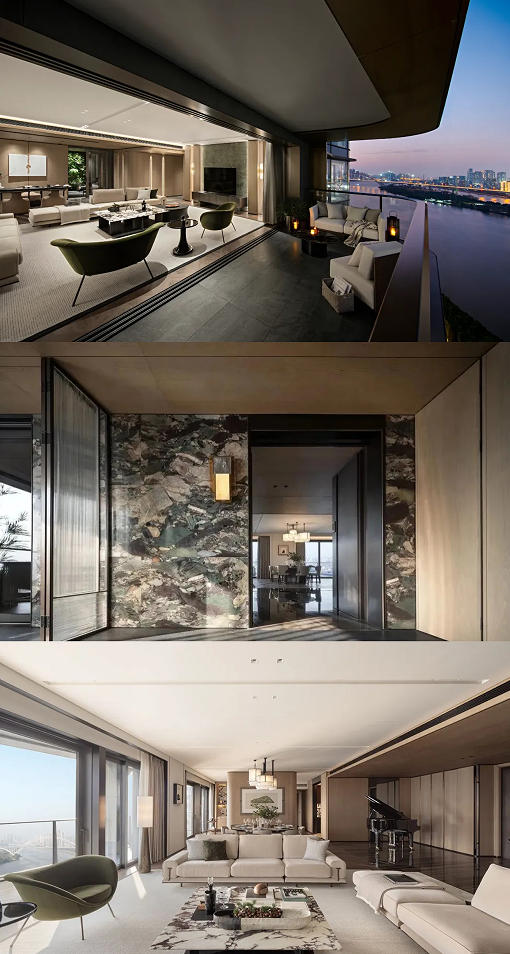
A Boundaryless Design Territory
Steve Leung's "leading" position has been repeatedly verified by milestone projects spanning regions and types. His design territory spans top-tier residences, luxury hotels, commercial landmarks, and public spaces, with footprints across Asia, the Middle East, and the globe, making him a design Leading sought after by high-net-worth individuals and international top brands.
Steve Leung's design vision is never limited to a single field; he actively explores the possibilities of cross-border integration, demonstrating extraordinary industry foresight. He leads SLD in collaborations with numerous internationally renowned brands, deeply participating in the field of product design, launching a series of furniture works that combine functionality and aesthetic value. The furniture series personally designed by Steve Leung give full play to his signature concept of "simplicity." He outlines furniture contours with smooth and clean lines, abandoning complicated decorations, selecting high-quality natural wood and leather materials, preserving the texture of the materials themselves, while through precise proportion control, presenting each piece of furniture in an elegant form.
In the collaborative Printemps Bleu ceiling chandelier with the French brand Baccarat, Steve Leung drew inspiration from Chinese blue-and-white porcelain and Baccarat's archival patterns, demonstrating a balance between tradition and innovation, merging the heritage of Chinese and French porcelain with crystal craftsmanship, revitalizing traditional techniques in modern design.
Beyond design, the "leading" aspect of Steve Leung's influence is further reflected in the key roles he plays in global design authority organizations. He was elected President (2017-2020) of the International Federation of Interior Architects/Designers (IFI), becoming the first Chinese President in the organization's 44-year history. This was the highest international recognition from the design community for the rise of Chinese design power, also entrust him unprecedented influence in global design rule-setting and academic exchange promotion. In 2022, he was awarded the Bronze Bauhinia Star (BBS) by the Government of the Hong Kong Special Administrative Region, recognizing his profound contributions to educating young architects and designers and actively promoting the sustainable development of the industry in Mainland China and Hong Kong.
Since then, he has continued to have a voice in judging panels of global top design awards and core positions within international design organizations, promoting the elevation of design standards and the expression of cultural diversity in the design field with his professionalism and leadership charm. The over 250 domestic and international authoritative awards he has received, including multiple honors from the industry's acclaimed "Oscar of Design," the Andrew Martin International Interior Design Awards, are a unanimous coronation by the global design community of his outstanding achievements. He is not only an outstanding creator but also a pioneer and spokesperson for the Chinese design power going global, reshaping the world's design discourse power.
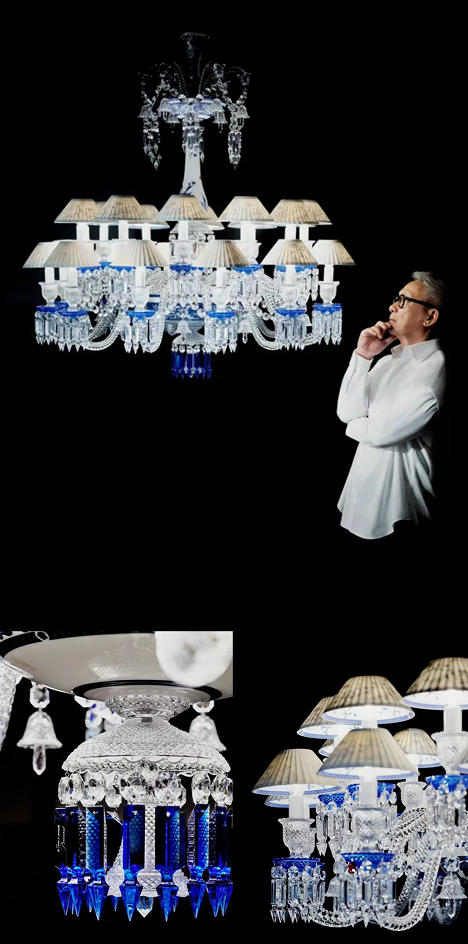
Charting the Future
Steve Leung’s "leadership" extends beyond personal achievement to strategic layouts advancing the entire industry. As early as 2000, when China’s design market was nascent, he foresightedly established a branch in Shanghai, among the first to introduce international design concepts and high-end service systems. This cultivated China’s high-end design market, raised professional and aesthetic standards, and laid a foundation for SLD’s expansion. In 2025, SLD extended into the heart of design by partnering with Italian designer Andrea Bonini to establish its first European joint venture in Milan—SLD · Andrea Bonini.
Steve Leung’s design journey is an epic of "leadership" written through philosophy, works, and strategy. He revolutionizes real estate products with profound aesthetics, sets benchmarks with an Eastern-rooted, globally-engaged philosophy, and wins voice for Chinese design via cross-border practice. As an undeniable global design leader, his multidimensional initiatives pave a grander path for design’s next era, illuminating a future belonging to Chinese design and the world.
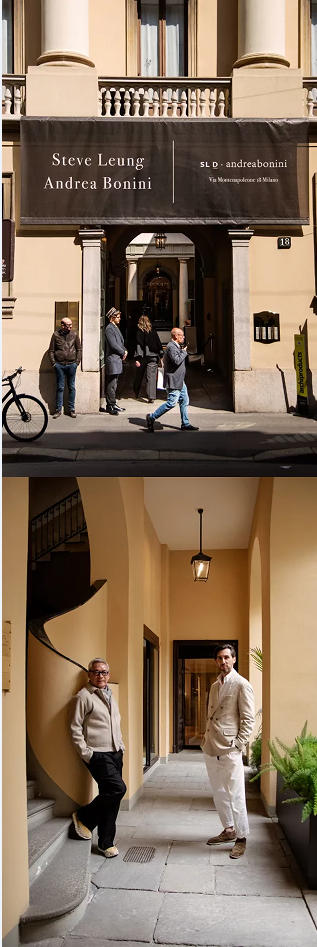
Media Contact
Company Name: GUANGZ ZHOU DESIGN WEEK
Contact Person: ORRERO CHAN
Email: Send Email
Country: China
Website: https://www.gzdesignweek.com/





